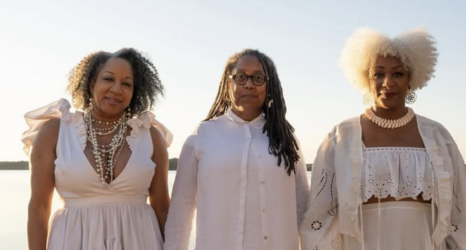Harriet Tubman can help us work toward feminist, anti-racist and liberatory pedagogy in games—a vital need for the field.
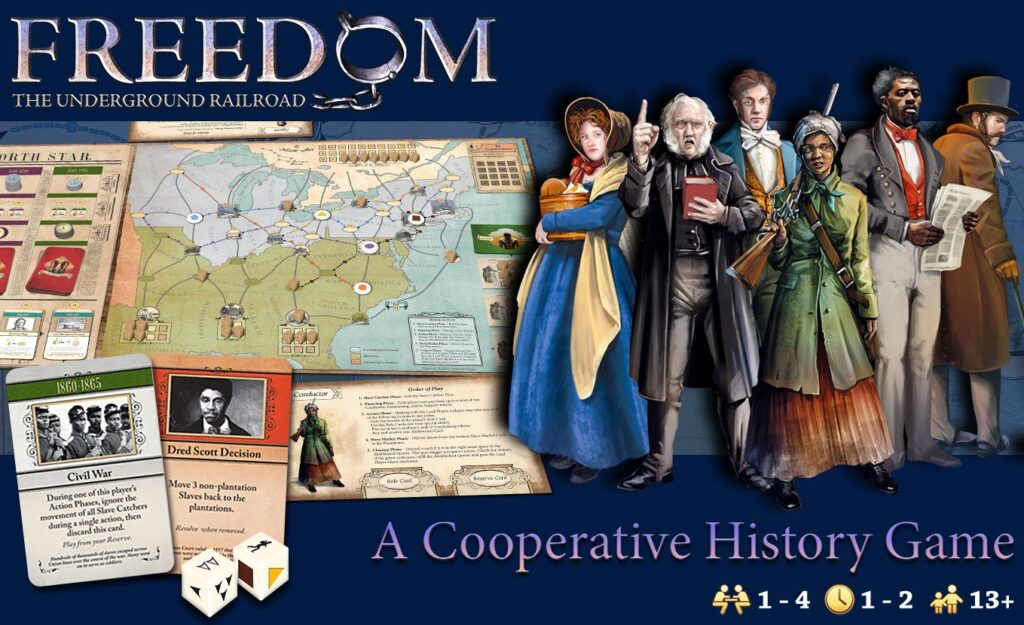
Launching Tuesday, Feb. 1, and culminating on March 10, the Harriet Tubman Bicentennial Project pays tribute to this feminist icon with a special commemorative issue through Ms. online and in print. Explore the interactive groundbreaking site here.
What’s Harriet Tubman got to do with video games? While this pairing may seem strange, as game design educators we found impact in bridging these two subjects in our own classroom. Centering Tubman in our course has helped in our ongoing project to develop feminist and anti-racist game design education.
The commercial video games field has serious problems, including harmful representations of several marginalized groups (Daniels and LaLone, 83-97), exploitative and harassing labor practices in industry, and even toxic behavior between gamers within the play community. These problems, and the work of resisting them, have been researched by leading Black games scholars and designers such as Kishonna L. Gray, D. Fox Harrell, Tanya DePass, Lindsay Grace, and others.
Unfortunately, these problems, and specifically the issue of racism which we focus on here, is not confined to the industry or play experience, and further pervades the games classroom. These issues manifest in the classroom in multiple ways, including in the way that racism in games is often left uncritiqued, in the unspoken norms that allow culturally appropriative design methods to go unquestioned, and even in student interactions that lead to harassment of instructors who seek to push back against oppressive norms.
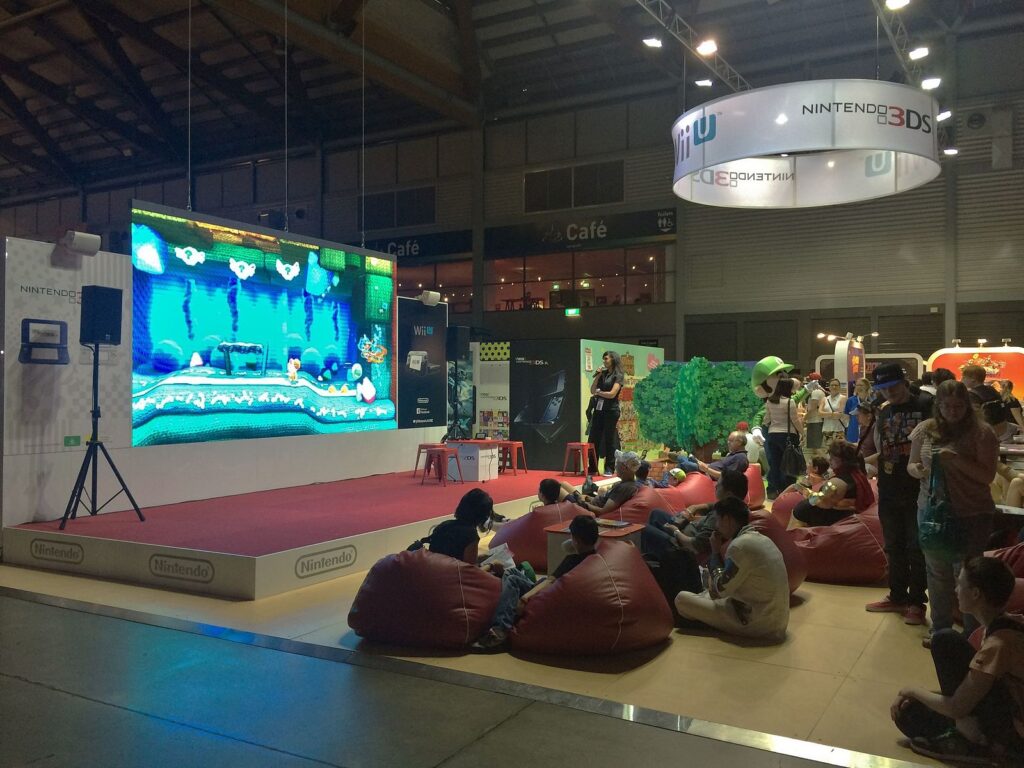
As co-instructors for the Fall 2019 iteration of an undergraduate game design course at Rensselaer Polytechnic Institute (see our prior publication on the critical feminist pedagogy of this course), we focused on telling Tubman’s story through games. This became part of a community engagement collaboration with the Capital Region campuses of the University at Albany, RPI and Albany Law School, led by Janell Hobson, to celebrate the 170th anniversary of Tubman’s self-liberation from slavery in the fall of 1849 for a “pop-up” exhibition at a local art gallery.
We knew that focusing on Tubman for a game design course at a predominately white STEM institution would be potentially difficult and would certainly cause discomfort as we confronted the historical and current realities of racism and white supremacy. Despite a diverse representation of multiple racial identities throughout our class, we only had one Black student in the course. Most of our students were not aware of the lingering effects of the institution of slavery. As such, we created a classroom community built on mutual trust where students were comfortable taking risks and sharing vulnerably.
Building on approaches we had developed in earlier years (blending critical making and dialogic pedagogy to develop a transformative learning environment rooted in social justice education, as well as helping students develop skills for communicating across differences), our classroom dialogues allowed our students to authentically voice and process the discomfort they felt designing games about Tubman and slavery.
We looked at the brutality of slavery, and Black resistance and resilience, as we discussed course readings, such as Kate Clifford Larson’s Bound for the Promised Land, Sarah Bradford’s book written during Tubman’s own lifetime, and Sarah Juliet Laura’s research on portrayals of slavery and revolt in games. We also applied dialogic pedagogy to engage students in a review of existing slavery games, many that are problematic and perpetuate racism. We dissected why these games had negative impacts by examining specific ways they portrayed slavery in their artwork, story and mechanics.
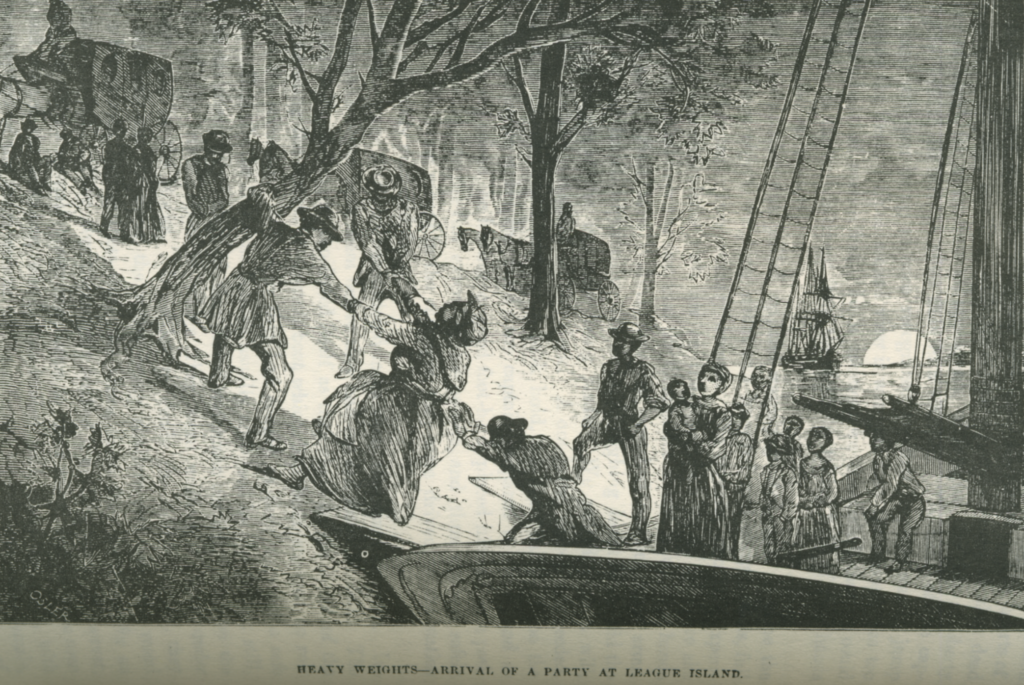
We looked at a range of examples, including the board game Freedom (2012) by Brian Mayer, which is a good-faith attempt to represent the Underground Railroad and is packed with educational material. It is quite informative with the facts of this history but minimizes the affective experience of the game, as it encourages an intellectualizing mode of play. We also looked at poor examples, such as the infamous Playing History: Slave Trade video game (2013), sometimes referred to as “Slave Tetris,” which we examined as a racist misuse of games’ ability to make meaning from mechanics—a quality known as procedural rhetoric. In this game, players stack slave avatars into a slave ship in the same manner as blocks are stacked in the puzzle game Tetris.
While the game developers claimed this dehumanization was intentional on their part, to emphasize this aspect of slavery, we talked about the inappropriateness of placing the player in the role of racist oppressor in a game in which pleasure could be derived from succeeding in the puzzle task. We also discussed the game’s shortcomings in terms of representation, with character design reminiscent of the racist iconography of minstrelsy. Examining these examples in dialogue helped address the nature of the game designer’s responsibility, tensions around who has the right to tell another’s story, and both the pitfalls and potentials for use of games in anti-racist teaching.
Even after these dialogues, ultimately only four of the eight student games were selected for the public exhibition. This ‘success rate’ of 50 percent felt like an accurate reflection of the friction between our course and shortcomings in the games field. Despite our approach, not all students were able to create successful games honoring Tubman, given the weight of dominant racist practices in games and game design education. Successful teams, two of which we highlight here, found ways to bring critical curiosity to the story of Tubman, were open to receiving constructive feedback on improving their designs, and worked to fabricate their games to a higher level of polish.
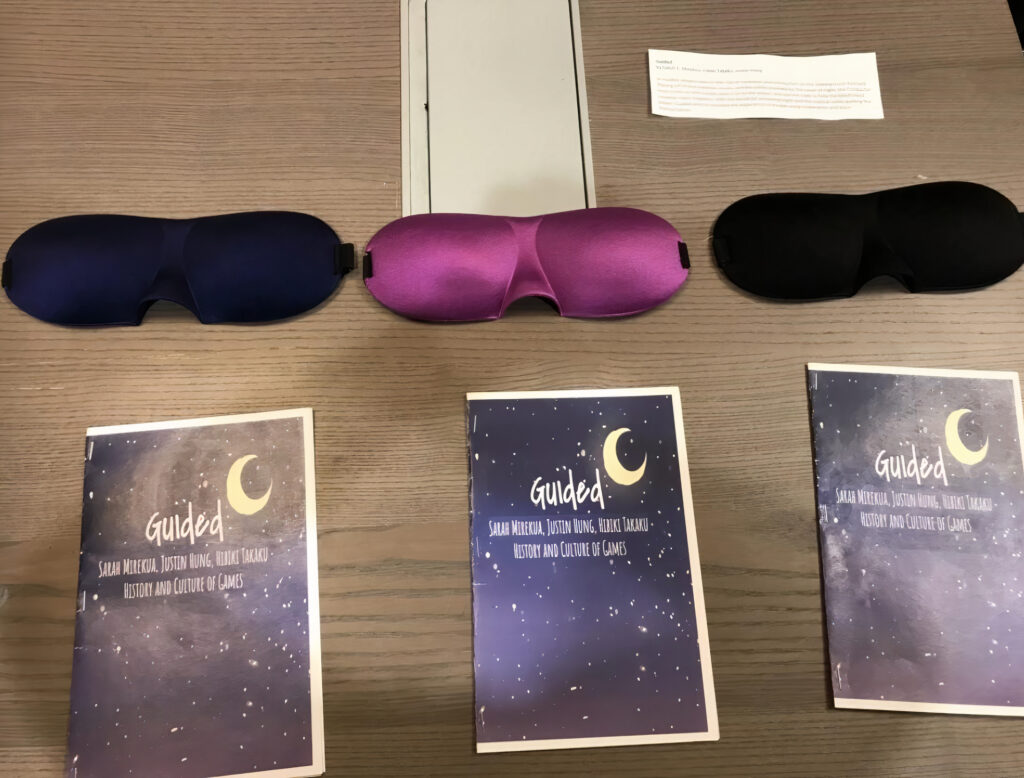
What it gets right: Guided creates an affective experience for players that moves beyond the factual to incorporate sound and touch interaction between players, with an emphasis on the collaboration, trust, and ingenuity that was necessary for the Underground Railroad to succeed.
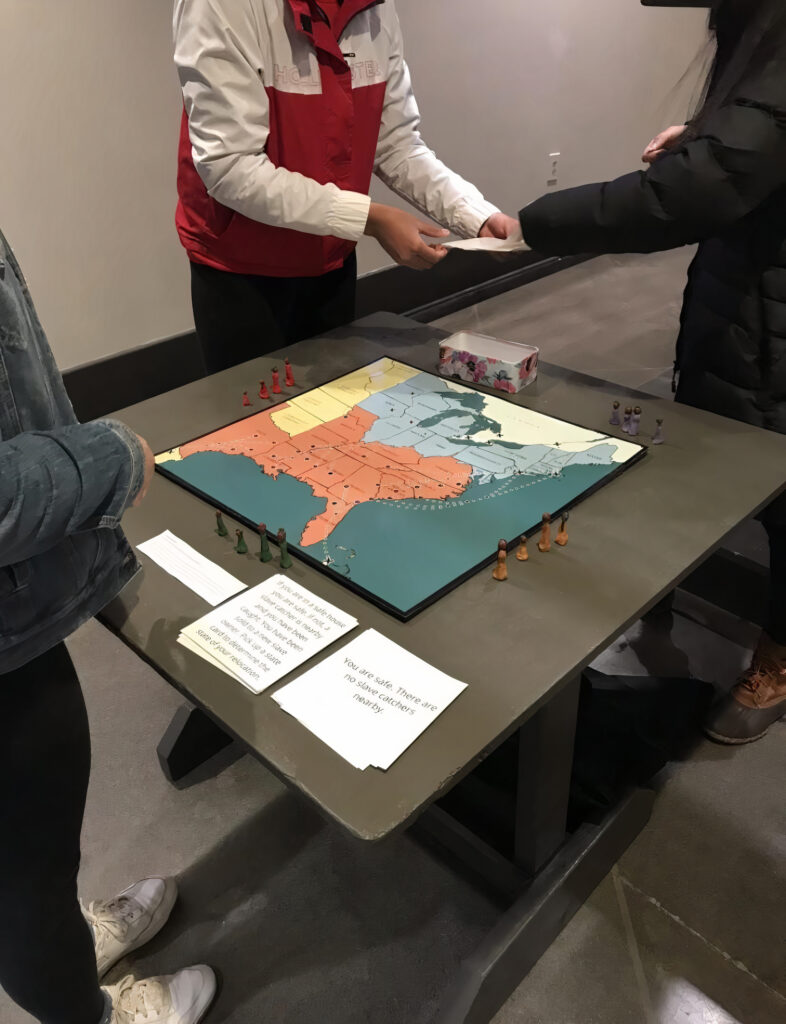
What it gets right: Family or Foe? includes moldable clay-based pieces for players to shape into highly personalized pieces, increasing their attachment to characters. Asymmetrical balance in the gameplay makes escape exponentially more difficult in larger groups, meaning players are encouraged to go it alone, leaving friends and family behind, giving players a window into the emotionally wrenching experience of losing connections with others through the brutality of the slavery system.
The two other games exhibited, Safehouse and Combahee, are both turn-based strategy games supported by historical research. In Safehouse, players are either a freedom seeker or slave hunter, playing battleship-style to avoid capture. In Combahee, players control either the Union or Confederate forces, and re-enact the Civil War raid led by Tubman. However, as with Freedom (2012), these two student games similarly facilitated a more intellectualized mode of play that shied away from the personal or emotional.
As a group, these student games succeeded in facilitating player interaction and reflection on the brutality of the history of slavery in the U.S., and the resilience of those who resisted, such as Tubman and other freedom seekers who collaborated on the Underground Railroad. Unlike problematic slavery games, the students’ games addressed enslaved peoples’ lived experience in meaningful ways, offering a playing experience that invites reflection.
A common theme throughout all four games is the lack of ability to win in a conventional way—mirroring the reality that there is no way to win within the systems of slavery, racism and white supremacy. All games were designed for in-person, physical play, allowing for more dialogic interaction between players than is possible in the digital medium, also reflecting the pedagogical approach of the course. By highlighting the common erasure of this history from our culture, these games also pointed out the systemic entrenchment that slavery continues to have on our collective history and culture.
These student games succeeded in facilitating player interaction and reflection on the brutality of the history of slavery in the U.S., and the resilience of those who resisted, such as Tubman.
Looking back on the experience, we reached out to former students from the course and asked for their longer-term reflections. While some of our white male students found meaning in the course in terms of informational learning about Black history and developed a new communication skill in dialogue, a female student of color who responded to us discussed a more personal response to the course, noting that through dialogue she developed a deeper awareness of how her peers’ social identities influenced their perspectives. All students who responded to us shared that this was the only instance of an undergraduate course they took that focused on the Black experience or a Black historical figure. This indicates there is much work yet to do, not only in our courses but across the curriculum.
Bringing in complex, key figures from Black history may be a helpful strategy. We see how bringing Tubman into our course functioned as a generative catalyst, pushing many “buttons” of the games field in meaningful ways, shifting focus to a Black female figure, and helping our students critically explore how identity, specifically race and gender, and systems of oppression, such as slavery, show up in games and the dominant narratives that games can perpetuate.
Utilizing Tubman and her history as a hero and avatar throughout our course also helped our class explore new ways to conceive game design and move forward methods to teach the history of slavery through games that include women-led and Black-led point-of-views.
In a way, we see Tubman herself as having ‘come back’ for us too, to help us work toward feminist, anti-racist and liberatory pedagogy in games, a vital need for our field.
The essay series for the Harriet Tubman Bicentennial Project includes:
Michelle D. Commander, “Let Me Not Forget: Harriet Tubman’s Enduring Speculative Visions” | Feb. 2
Chanda Prescod-Weinstein, “Harriet Tubman, Astronomer Extraordinaire” | Feb. 3
The Life of Harriet Tubman
Kate Clifford Larson, “Harriet Tubman: A Life Beyond Myths” | Feb. 8
“Family Portraits of a Legend: Conversations with the Descendants of Harriet Tubman” | Feb. 9
Deirdre Cooper Owens, “Harriet Tubman’s Disability and Why It Matters” | Feb. 10
The Untold Stories and Songs of Harriet Tubman
Edda L. Fields-Black, “‘Harriet’ and the Combahee River Uprising” | Feb. 15
A Conversation with Music Composer Nkeiru Okoye | Feb. 16
Maya Cunningham, “The Sound World of Harriet Tubman” | Feb. 17
Imagining Harriet Tubman
Amy Corron and Rebecca Rouse, “Why Video Games Education Needs Harriet Tubman” | Feb. 22
A Conversation with Artist Nettrice Gaskins | Feb. 23
Michele Wallace, “Harriet Tubman in the Art of Faith Ringgold” | Feb. 24
Rediscovering Harriet Tubman
Jonathan Michael Square, “The Two Harriets” | March 1
A Conversation with Karen V. Hill, Director of the Harriet Tubman Home | March 2
Douglas V. Armstrong, “Using Archaeology to Rediscover Harriet Tubman’s Life in Freedom” | March 3
Celebrating a Legacy
Keisha N. Blain, “Justice and the Meaning of the Tubman $20” | March 8
A Conversation with Mary N. Elliott, Curator of American Slavery at the Smithsonian Museum | March 9
Harriet Tubman Syllabus | March 10
Questions or press queries about the series? Contact tubman200@msmagazine.com.







